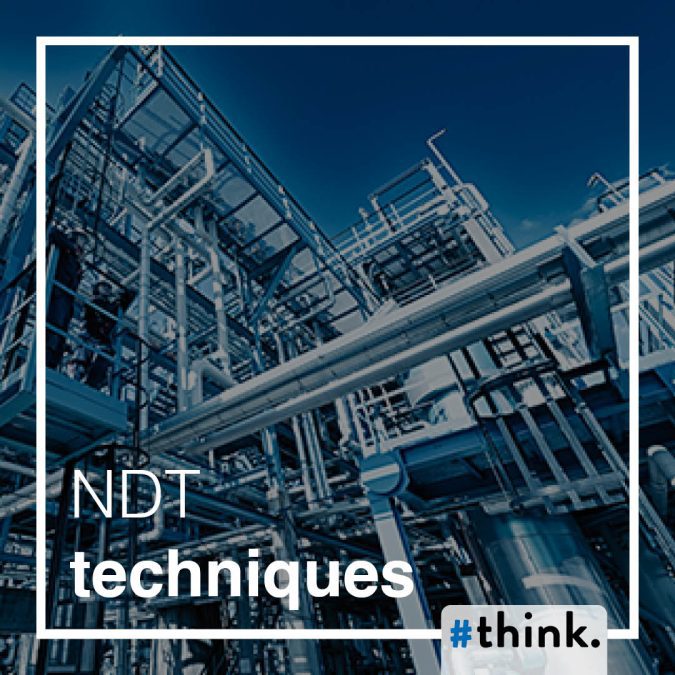Non-Destructive Testing (NDT) has revolutionised the way industries ensure the integrity and reliability of materials and structures. In this blog, we will delve into the intricate world of NDT inspection techniques, exploring their significance, applications, and advancements.
Understanding NDT:
Non-Destructive Testing encompasses a variety of inspection methods designed to evaluate the properties of materials without causing any damage. The primary objective is to detect flaws, defects, or irregularities in structures, components, or systems, ensuring their safe and efficient operation.
Common NDT Techniques:
Visual Inspection:
A fundamental technique, visual inspection relies on the naked eye or optical aids to identify surface irregularities or visible defects.
Ideal for initial assessments and detecting issues like corrosion, cracks, or weld discontinuities.
Ultrasonic Testing (UT):
UT employs high-frequency sound waves to penetrate materials and identify internal defects.
The echoes produced during the process provide information about the material’s thickness and integrity.
Radiographic Testing (RT):
Using X-rays or gamma rays, RT captures images of the internal structure of materials.
Effective for identifying defects such as cracks, inclusions, or voids in welds and castings. It can also be used for external pipe in scenarios where the material is wrapped – insulated pipework for example.
Magnetic Particle Inspection (MPI):
MPI detects surface and near-surface defects in ferromagnetic materials.
The technique involves applying magnetic fields and using iron particles to reveal flaws like cracks or discontinuities.
Dye Penetrant Inspection (DPI):
DPI is ideal for detecting surface-breaking defects in non-porous materials.
A liquid penetrant is applied to the surface, and after a specified time, excess penetrant is removed, and a developer is applied to reveal any flaws.
Eddy Current Testing (ECT):
ECT uses electromagnetic induction to detect cracks, corrosion, or variations in material conductivity.
Widely employed in the aerospace and automotive industries for assessing conductive materials.
Applications Across Industries:
Aerospace:
NDT plays a crucial role in ensuring the structural integrity of aircraft components.
Techniques like ultrasonic testing and eddy current testing are extensively used for inspecting critical aerospace materials.
Oil and Gas:
In the oil and gas industry, NDT is vital for inspecting pipelines, welds, and pressure vessels.
Radiographic testing is commonly used to identify defects in welds, while ultrasonic testing ensures the integrity of pipelines.
Manufacturing:
NDT is integral in manufacturing processes to identify defects in raw materials and finished products.
Visual inspection, ultrasonic testing, and magnetic particle testing are employed to maintain product quality.
Infrastructure:
The structural health of bridges, dams, and buildings is assessed using various NDT techniques.
Visual inspection is the most common method used to detect flaws that could compromise the safety of these structures.
Advancements in NDT:
Digital Radiography:
Digital radiography has replaced traditional film-based methods, offering faster results and improved image manipulation capabilities.
It enhances efficiency in identifying and analysing defects.
Phased Array Ultrasonics (PAUT):
PAUT uses multiple ultrasonic elements to create detailed images, providing enhanced defect detection capabilities.
This technology is particularly advantageous for complex geometries and weld inspections.
Guided Wave Ultrasonics:
Employed for inspecting long stretches of pipelines or structures, guided wave ultrasonics offer continuous monitoring without the need for direct contact with the material.
In conclusion Non-Destructive Testing has become an indispensable tool across industries, ensuring safety, reliability, and compliance with stringent quality standards. As technology continues to advance, the evolution of NDT techniques will undoubtedly contribute to even more accurate, efficient, and cost-effective inspections. Whether it’s the aerospace, oil and gas, manufacturing, or infrastructure sectors, the significance of NDT in maintaining the integrity of materials and structures cannot be overstated. As we move forward, the continuous refinement of NDT methods will play a pivotal role in shaping the future of inspection and quality assurance practices.

